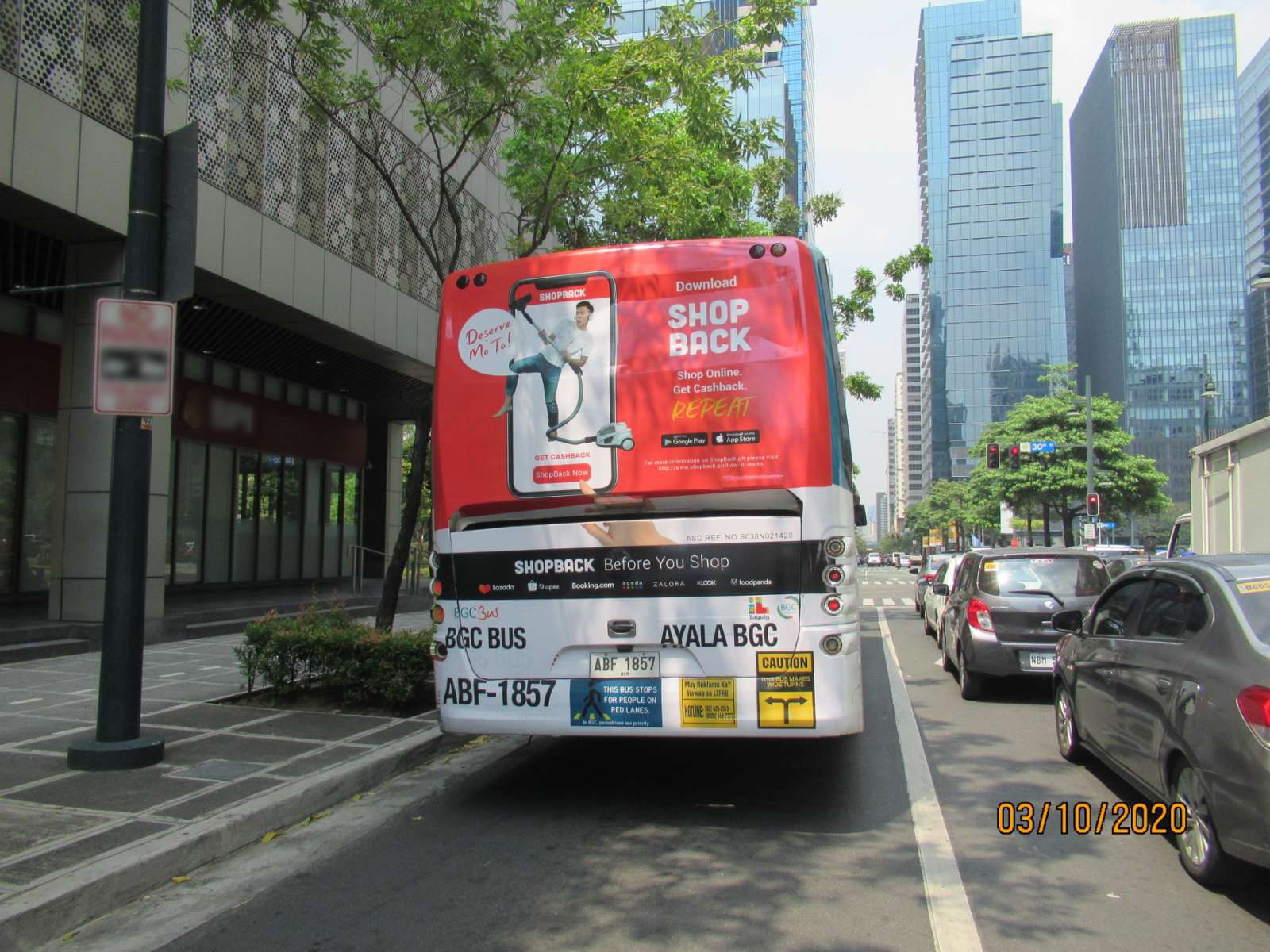Transit Advertising Philippines for Unmatched Brand Exposure
Transit Advertising Philippines for Unmatched Brand Exposure
Blog Article
Exactly How Transportation Marketing Can Transform Mass Transit Spaces Into Dynamic Advertising And Marketing Platforms
Transportation advertising and marketing holds significant capacity to redefine public transport spaces right into lively advertising and marketing platforms that educate and engage. By utilizing ingenious layouts such as interactive stands and digital displays, brands can not just get to a varied target market yet also boost the general traveler experience. This strategy creates an one-of-a-kind opportunity for brand names to link with consumers in a setting that is often forgotten. As we discover the diverse advantages and advancing approaches of transportation advertising, it raises the question of how this change might redefine our communications with both brand names and the city setting.
Benefits of Transportation Marketing

Additionally, transportation advertising is extremely cost-effective compared to conventional media. It enables advertisers to achieve high perceptions at reduced expenses, optimizing return on investment. The restricted audience of commuters gives a chance for brand names to convey their messages to individuals that are typically responsive during their traveling times.
Moreover, the vibrant nature of transit marketing permits campaigns to be updated often, ensuring that messaging stays pertinent and prompt. This versatility can be critical in reacting to market patterns or marketing occasions, maintaining the brand top-of-mind for consumers. Finally, the prevalent presence of transit marketing adds to brand name recall; duplicated direct exposure within familiar travel contexts reinforces brand awareness and promotes customer commitment, inevitably driving sales and enhancing brand credibility.
Kinds Of Transit Marketing
Mass transit systems offer different layouts for advertising, each dealing with different marketing strategies and audience engagement methods. One famous kind is external bus and train covers, which cover the whole automobile and produce a mobile billboard impact, permitting high visibility in urban environments. These wraps can capture focus as they go across active roads, reaching a diverse target market.
An additional prominent format is interior marketing, that includes posters, digital displays, and ads on transit seats. These positionings engage guests throughout their trip, strengthening brand messaging in a constrained area. Digital displays, specifically, use the advantage of vibrant content, enabling marketers to update messages in real-time.
Terminal advertising and marketing is also significant, featuring posters, banners, and interactive stands within transit terminals. These advertisements leverage foot traffic and can target details demographics based on location.
Lastly, advertising collaborations with transportation authorities can result in unique projects, such as themed transit experiences or occasions, enhancing the total interaction with travelers. Each sort of transportation advertising uses distinct benefits, permitting brands to customize their strategy to successfully reach their target market within the general public transportation ecosystem.
Engaging Travelers Effectively
Commuters are progressively flooded with advertising messages during their day-to-day journeys, making it essential for brands to involve them in cutting-edge ways. To capture interest in this jampacked room, advertisers need to focus on imagination and importance. Making use of eye-catching visuals and concise messaging can considerably boost the possibility of interaction.
Interactive aspects, such as QR codes or increased fact attributes, can also transform static ads into immersive experiences, promoting a much deeper link with the target market. Brand names must concentrate on Bonuses dealing with commuters' interests and needs, tailoring messages to resonate with their lifestyle, whether through promos for neighborhood businesses or solutions created to boost their travelling experience.
In addition, timing plays a critical duty; purposefully positioning advertisements during top commuting hours can make best use of visibility and impact. Engaging travelers properly likewise includes leveraging social media integration, permitting travelers to share their experiences or promotions straight from transportation platforms, thus magnifying brand reach.
Essentially, efficient engagement pivots on recognizing the commuter trip and developing compelling, interactive, and relevant marketing experiences that not just catch attention yet additionally drive action and loyalty. By doing so, brands can change public transport into a dynamic advertising and marketing system that reverberates with its audience.

Measuring Marketing Influence
Exactly how can brand names properly assess the efficiency of their marketing campaign en route atmospheres? Measuring the impact of transportation advertising and marketing needs a multifaceted strategy that integrates measurable and qualitative metrics. One prevalent approach is tracking interaction with mobile analytics, where brand names can evaluate foot website traffic patterns and app communications in the past, throughout, and after campaigns.
Surveys can offer useful understandings right into brand name recall and consumer view, permitting brands to determine just how well their messages resonate with travelers. Furthermore, checking social networks engagement related to particular campaigns can reveal changes in public perception and brand conversation.

In addition, collaborating with transit agencies can improve measurement accuracy, as they commonly have thorough demographic information on ridership trends. By integrating these methodologies, brands can create a comprehensive understanding of their advertising effectiveness, guaranteeing that their campaigns not only reach yet additionally influence their target market properly.
Future Fads in Transportation Marketing
A considerable shift is anticipated in transit advertising and marketing as technical improvements and altering consumer behaviors improve the landscape. Transit Advertising Philippines. The assimilation of interactive media and electronic screens is expected to enhance engagement, allowing brand names to provide dynamic web content that resonates with diverse target markets. As public transport systems embrace clever innovation, advertisers will certainly take advantage of real-time data analytics to customize messages based on guest demographics and actions
Furthermore, augmented fact (AR) is poised to revolutionize the method commuters connect with ads. By providing immersive experiences, AR can change a mundane trip into an engaging story that catches focus and promotes brand name loyalty. This innovation will likely motivate advertisers to produce more experiential campaigns that drive customer interaction.
Sustainability is an additional vital pattern affecting transit advertising and marketing. As environmental awareness grows, brand names will significantly seek to straighten with environment-friendly practices, using lasting materials and promoting environment-friendly campaigns within their campaigns.
Final Thought
Finally, transit marketing supplies significant benefits her explanation by boosting brand exposure Continued and involving a restricted target market. Through different layouts, such as exterior covers and electronic screens, it transforms mass transit right into a vibrant advertising platform. Efficient involvement strategies and robust measurement methods additionally intensify its impact. As fads evolve, the potential for ingenious communications in between travelers and brand names is positioned to expand, making certain that transportation advertising remains an important element of modern-day marketing strategies.
Transportation marketing holds considerable potential to redefine public transport rooms into vibrant advertising systems that educate and involve. The pervasive visibility of transportation marketing adds to brand recall; duplicated direct exposure within familiar traveling contexts strengthens brand recognition and promotes consumer commitment, eventually driving sales and enhancing brand reputation.
Just how can brands properly evaluate the effectiveness of their marketing campaigns in transportation environments?In verdict, transit advertising and marketing provides substantial advantages by boosting brand presence and engaging a restricted target market. Transit Advertising Philippines. As trends advance, the capacity for cutting-edge interactions in between brands and travelers is positioned to grow, making sure that transportation marketing continues to be a vital element of contemporary marketing techniques
Report this page